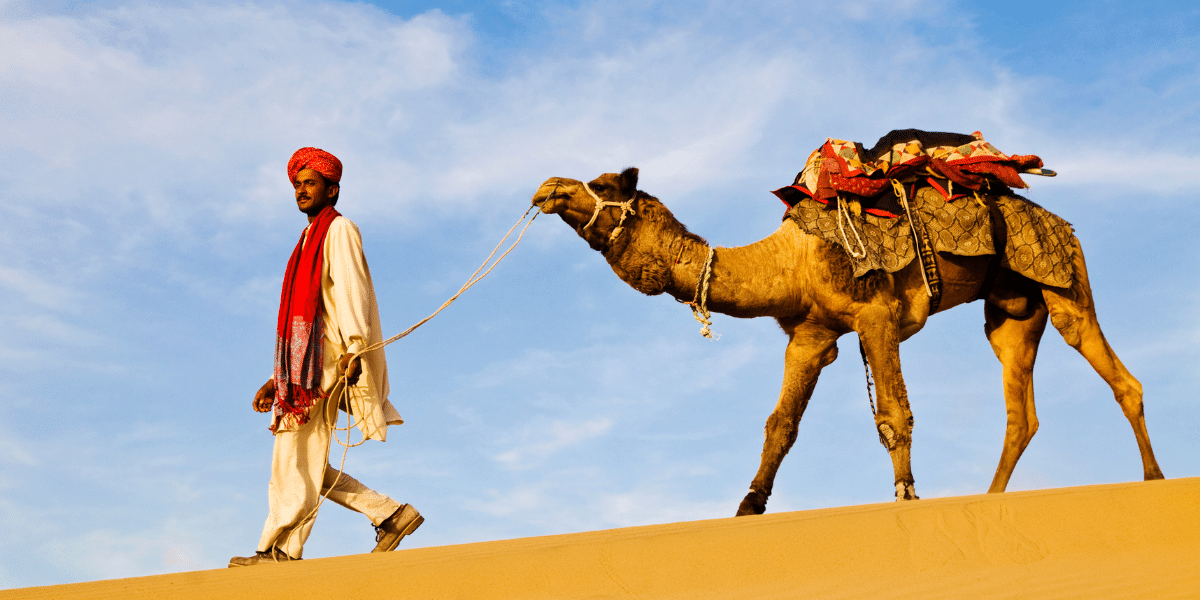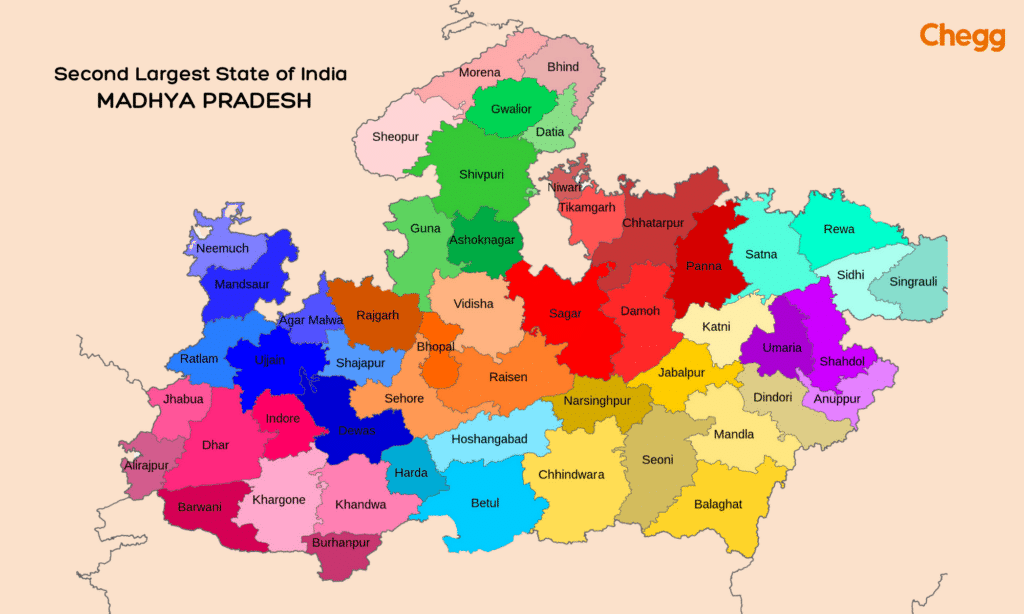
Quick Summary
Table of Contents
India, a country renowned for its diverse cultures, languages, and landscapes, is home to a variety of states, each unique in its size, population, and geographical features. Among these, the northwestern region is dominated by the largest state of India, Rajasthan. Spanning over 342,239 square kilometers, this immense region officially holds the title of the largest state in India by land area. Understanding the largest state of India, however, goes far beyond its sheer size. There is much more to know about this vibrant largest state of India, from its deep historical roots to its distinct geographical features.
The largest state of India is Rajasthan by land area, which spans 342,239 square kilometers in the northwestern region bordering Pakistan, making it not only the largest state in India but also one of the most geographically significant regions in the country. While Rajasthan leads in size, Uttar Pradesh is the largest state of India by population, with over 240 million people.
Key Facts about Rajasthan:
Key Facts about Uttar Pradesh:

Rajasthan, the largest state of India, is a fascinating blend of different landscapes, rich history, and vibrant culture. Its geography has striking contrasts, from the dry Thar Desert to the rugged Aravalli Range.
Rajasthan has a hot and dry climate with extreme temperatures. Summers are very hot, while winters are relatively mild. Rainfall is rare, with most of it occurring during the monsoon season.
Rajasthan’s landscape is diverse, including:
Despite the dry conditions, Rajasthan has a unique ecosystem. The Thar Desert supports desert plants like cactus, acacia, and khejri. The Aravalli Range has diverse flora, including sal, teak, and bamboo.
The state’s wildlife is equally interesting, with animals like the Indian desert fox, chinkara, blackbuck, and migratory birds thriving in the desert. The tiger reserves of Ranthambore, Sariska, and Mukundra Hills are famous for their wildlife.
Rajasthan’s varied geography, climate, and wildlife make it a place of contrasts and a land of beauty and wonder.
Rajasthan’s(Largest State of India) history is marked by majestic fortresses and opulent palaces built by Rajput kings and Maharajas. Some of the most famous examples include:
Rajasthan(The largest State of India) is home to beautiful step wells or baolis, which were historically used to store water in the arid desert climate. These structures are architectural gems, like:
Rajasthan is renowned for its wide array of handicrafts, each with its own distinct style:
The music and dance traditions of Rajasthan are an integral part of the state’s cultural fabric.
Rajasthan, known as the “Land of Kings,” is a state in northwestern India with a rich and diverse history and culture. Its historical significance, architectural marvels, and vibrant traditions make it a unique region in India.
Rajasthan is known for its vibrant festivals, including:
Rajasthani cuisine is known for its rich flavors and use of spices. Popular dishes include:
Rajasthan is famous for its handicrafts, including:
Rajasthani folk music and dance are integral to the culture. Popular forms include:
Rajasthan is renowned for its magnificent forts and palaces, including:
Rajasthan, India’s crown jewel, invites travelers with its mix of history, culture, and natural beauty. From grand forts and palaces to lively festivals and diverse wildlife, there’s something for every adventurer.
Rajasthan is renowned for its vibrant festivals that reflect its rich culture and traditions. Some of the major festivals include:
Rajasthan holds a unique and significant place in India due to its rich history, vibrant culture, and strategic location. Here are some of the key aspects that highlight Rajasthan’s importance:
Rajasthan is known for its rich history, particularly during the medieval period. It was home to numerous princely states, each with its own royal family, fortresses, and unique traditions. The region saw the rise and fall of powerful Rajput rulers who built grand forts, palaces, and temples. Some of the most famous historical landmarks include:
These forts and palaces reflect the grandeur and military history of the Rajput rulers and their kingdoms.
Rajasthan is the epitome of India’s cultural richness, with its traditional music, dance, attire, and festivals.
Rajasthan occupies a strategic location in the northwestern part of India, bordering Pakistan to the west. Its vast and diverse geography includes:
These geographical features contribute to Rajasthan’s natural beauty and make it a prime destination for tourism.
Rajasthan is one of the most popular tourist destinations in India, attracting millions of visitors each year. The state’s grand palaces, forts, temples, and vibrant festivals draw both domestic and international tourists. Popular tourist destinations in Rajasthan include:
Rajasthan plays a significant role in India’s economy, particularly in sectors like:
Rajasthan has a strong political presence in India. The state plays a crucial role in national elections due to its significant number of parliamentary seats. The state has historically been a key battleground for both the Bharatiya Janata Party (BJP) and the Indian National Congress, and its political landscape has a considerable influence on Indian politics.
Despite being known for its desert, Rajasthan is home to several important national parks and wildlife sanctuaries, such as:
These parks contribute to the conservation of various species and play a key role in India’s environmental heritage.
Rajasthan the largest state of India, is a state with a rich culture and history, but it also faces many challenges. However, these challenges can become opportunities for growth.
By addressing these challenges and seizing these opportunities, Rajasthan can achieve sustainable development and progress.
Zooming out from individual statеs, lеt’s takе a panoramic viеw of thе top 10 largеst statе of India by arеa in India. Thеsе statеs arе not only gеographically significant but also harbor uniquе cultural, historical, and gеographical characteristics that shape thе nation’s identity.
| Rank | State | Area (sq km) |
|---|---|---|
| 1 | Rajasthan | 342,239 |
| 2 | Madhya Pradesh | 308,245 |
| 3 | Maharashtra | 307,713 |
| 4 | Uttar Pradesh | 240,928 |
| 5 | Gujarat | 196,024 |
| 6 | Karnataka | 191,791 |
| 7 | Andhra Pradesh | 162,968 |
| 8 | Odisha | 155,707 |
| 9 | Chhattisgarh | 135,191 |
| 10 | Tamil Nadu | 130,058 |
Each of thеsе states contributes a unique chapter to thе narrativе of India, adding to thе nation’s rich cultural tapеstry and hеritagе.
India is a vast country comprised of 28 states, each with its own unique identity. Let’s explore the top five largest states in India based on their area:

As we’ve already discussed, Rajasthan, the “Land of Kings,” is the Largest State of India, covering an impressive area of over 342,239 square kilometers. This vast expanse of land is characterized by the arid Thar Desert, the ancient Aravalli Range, and a diverse array of flora and fauna. Rajasthan’s rich history, vibrant culture, and thriving tourism industry make it a true gem of the Indian subcontinent.

Madhya Pradesh, located in the heart of India, is the second largest state of India, spanning an area of over 308,245 square kilometers. Known as the “Heart of India,” Madhya Pradesh is a land of contrasts, with its lush forests, serene lakes, and ancient historical sites. The state is home to a diverse range of wildlife, including the majestic Bengal tiger, and is a popular destination for nature enthusiasts and adventure seekers.
Situated in the western region of India, Maharashtra is the third-largest state, covering an area of over 307,713 square kilometers. From the bustling metropolis of Mumbai to the picturesque hill stations of the Western Ghats, Maharashtra offers a diverse range of experiences. The state is known for its rich cultural heritage, including the iconic Maratha Empire, as well as its thriving industries and vibrant arts and crafts.
Uttar Pradesh, located in the northern part of India, is the fourth-largest state, spanning an area of over 240,928 square kilometers. Home to the iconic Taj Mahal and the sacred city of Varanasi, Uttar Pradesh is a land of cultural and historical significance. The state is also known for its diverse agricultural landscape, with fertile plains and a thriving agricultural economy.
Jammu and Kashmir, situated in the northernmost part of India, is the fifth-largest state, covering an area of over 222,236 square kilometers. This picturesque region is known for its snow-capped mountains, serene lakes, and lush meadows, making it a popular destination for nature lovers and adventure enthusiasts. Jammu and Kashmir is also home to a rich cultural heritage, with a blend of Hindu, Muslim, and Buddhist influences.
Rajasthan, the largest state of India, is far more than a geographical marvel; it is a profound symbol of the nation’s cultural and historical grandeur. The title of the largest state of India is defined by its vast area of 342,239 sq km, which encompasses an incredible diversity of landscapes, from the Thar Desert to the Aravalli Range. This immense scale has nurtured a unique heritage, effectively making the largest state of India a living museum of majestic forts, palaces, and vibrant traditions. To explore Rajasthan is to embark on a journey through time, an experience that truly showcases why this remarkable region, officially the largest state of India, holds such paramount importance in the nation’s identity.
Read More :-
Namе thе largеst statе of India: Rajasthan holds thе distinction of bеing thе largеst statе in India by arеa.
Largеr states oftеn possess morе parliamentary seats, giving them a stronger political voice and influence in thе national political landscapе.
Population distribution varies across large statеs, with urban cеntеrs еxpеriеncing highеr concеntrations of pеoplе and industry, whilе rural arеas oftеn rеtain traditional agricultural practices.
The future of thеsе statеs involves embracing modernization while prеsеrving cultural and historical roots, contributing dynamically to India’s growth and progress on multiple fronts.
The second-largest Indian state by area is Madhya Pradesh, spanning approximately 308,350 square kilometers. It’s known for its forests and rich heritage.
The smallest state in India by area is Goa, covering just about 3,702 square kilometers. Despite its small size, Goa is well known for its scenic beaches and vibrant tourism industry.
Rajasthan holds thе distinction of bеing thе largеst statе in India by arеa spanning across 342,239 square kilometers.
Maharashtra is generally considered the richest state in India due to its strong economy, financial capital Mumbai, and diverse industries.
The third-largest state in India is Maharashtra, with 307,713 square kilometers.
The top three largest states of India by area are Rajasthan, Madhya Pradesh, and Maharashtra. Rajasthan is the biggest, covering 342,239 sq km with vast deserts and rich heritage. Madhya Pradesh, known as the “Heart of India,” spans 308,350 sq km, while Maharashtra covers 307,713 sq km and is a hub of industry, culture, and tourism. Together, these states highlight India’s geographic diversity and economic strength.

Authored by, Muskan Gupta
Content Curator
Muskan believes learning should feel like an adventure, not a chore. With years of experience in content creation and strategy, she specializes in educational topics, online earning opportunities, and general knowledge. She enjoys sharing her insights through blogs and articles that inform and inspire her readers. When she’s not writing, you’ll likely find her hopping between bookstores and bakeries, always in search of her next favorite read or treat.
Editor's Recommendations
Chegg India does not ask for money to offer any opportunity with the company. We request you to be vigilant before sharing your personal and financial information with any third party. Beware of fraudulent activities claiming affiliation with our company and promising monetary rewards or benefits. Chegg India shall not be responsible for any losses resulting from such activities.
Chegg India does not ask for money to offer any opportunity with the company. We request you to be vigilant before sharing your personal and financial information with any third party. Beware of fraudulent activities claiming affiliation with our company and promising monetary rewards or benefits. Chegg India shall not be responsible for any losses resulting from such activities.